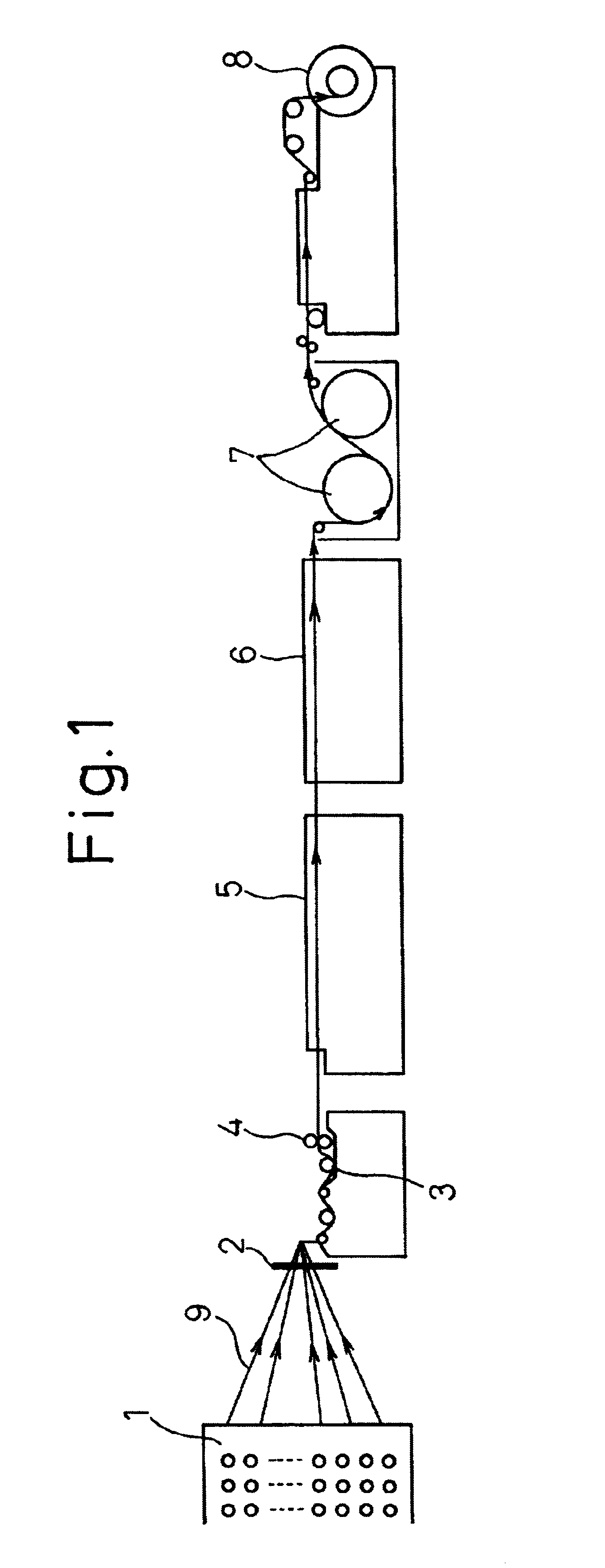Beam for weaving and sizing method
- Summary
- Abstract
- Description
- Claims
- Application Information
AI Technical Summary
Benefits of technology
Problems solved by technology
Method used
Image
Examples
example 18
The polytrimethylene terephthalate yarn of 56 dtex / 24 f obtained from the process 1 (two-stage process of spinning and drawing) was used as a warp yarn and the yarn of 84 dtex / 36 f obtained from the same process was used as a weft yarn. The sizing, beaming and weaving operations were carried out under the same conditions for a WJL as in Example 1, except that an amount of the wax type oil was reduced to 1% by weight (apparent weight base) and to 2.6% by weight on the pure weight base relative to the sizing agent component.
Results thereof were shown in Table 3.
PUM
| Property | Measurement | Unit |
|---|---|---|
| Fraction | aaaaa | aaaaa |
| Force | aaaaa | aaaaa |
| Angle | aaaaa | aaaaa |
Abstract
Description
Claims
Application Information
 Login to View More
Login to View More - R&D
- Intellectual Property
- Life Sciences
- Materials
- Tech Scout
- Unparalleled Data Quality
- Higher Quality Content
- 60% Fewer Hallucinations
Browse by: Latest US Patents, China's latest patents, Technical Efficacy Thesaurus, Application Domain, Technology Topic, Popular Technical Reports.
© 2025 PatSnap. All rights reserved.Legal|Privacy policy|Modern Slavery Act Transparency Statement|Sitemap|About US| Contact US: help@patsnap.com


